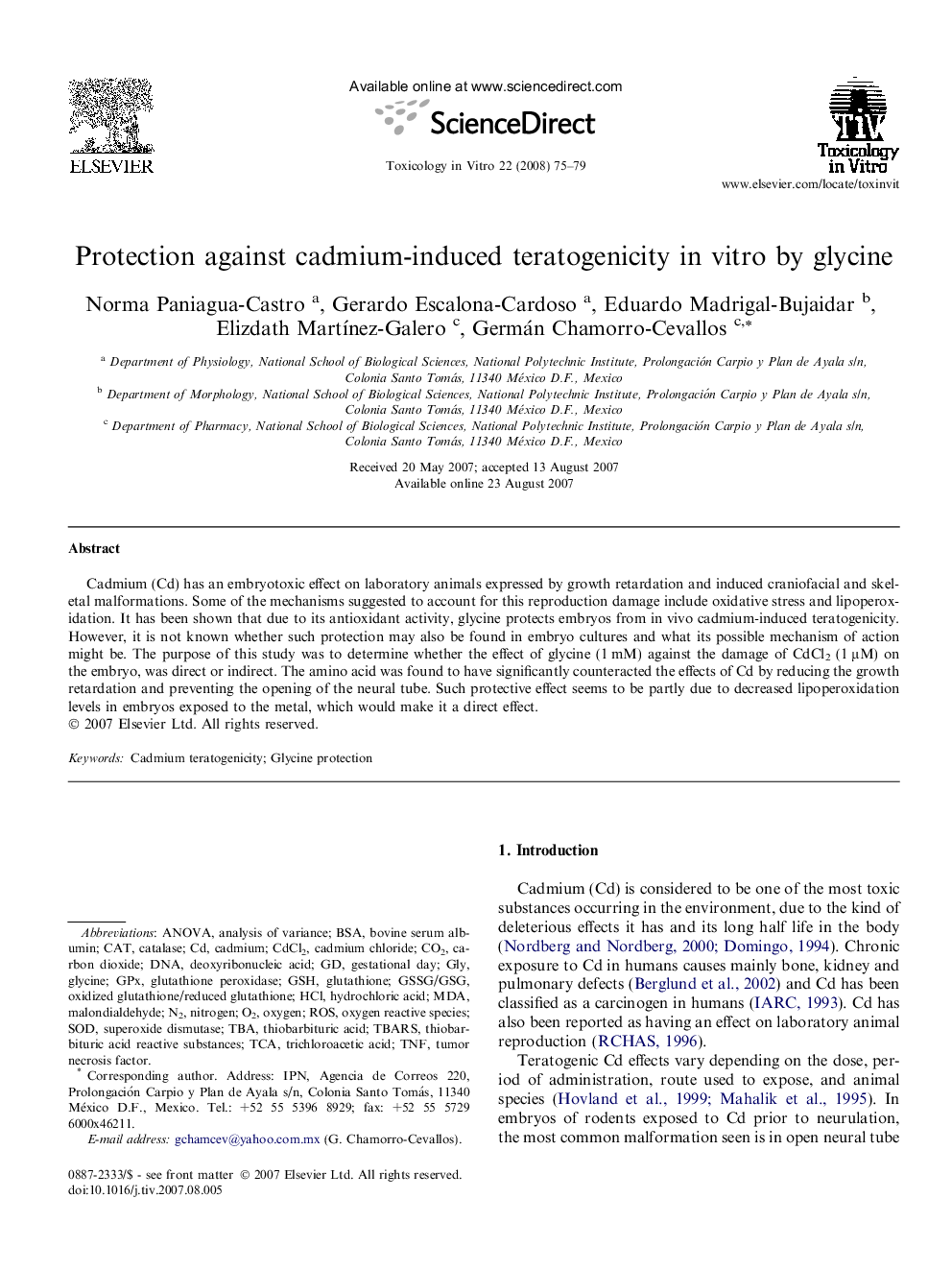| Article ID | Journal | Published Year | Pages | File Type |
|---|---|---|---|---|
| 2603619 | Toxicology in Vitro | 2008 | 5 Pages |
Cadmium (Cd) has an embryotoxic effect on laboratory animals expressed by growth retardation and induced craniofacial and skeletal malformations. Some of the mechanisms suggested to account for this reproduction damage include oxidative stress and lipoperoxidation. It has been shown that due to its antioxidant activity, glycine protects embryos from in vivo cadmium-induced teratogenicity. However, it is not known whether such protection may also be found in embryo cultures and what its possible mechanism of action might be. The purpose of this study was to determine whether the effect of glycine (1 mM) against the damage of CdCl2 (1 μM) on the embryo, was direct or indirect. The amino acid was found to have significantly counteracted the effects of Cd by reducing the growth retardation and preventing the opening of the neural tube. Such protective effect seems to be partly due to decreased lipoperoxidation levels in embryos exposed to the metal, which would make it a direct effect.
